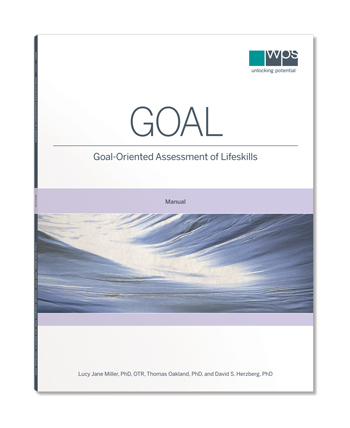Goal-Oriented Assessment of Lifeskills (GOAL) aids evaluation of functional motor abilities needed for daily living
Goal-Oriented Assessment of Lifeskills
GOAL
Goal-Oriented Assessment of Lifeskills (GOAL) aids evaluation of functional motor abilities needed for daily livingChoose from our formats
Kits
Starter & complete kits, print & digital
1 option
Test forms & reports
Booklets, record forms, answer sheets, report usages & subscriptions
1 option
Support materials
Manuals, stimulus books, replacement items & other materials
3 options
All products
All tests and materials offered for GOAL
5 options